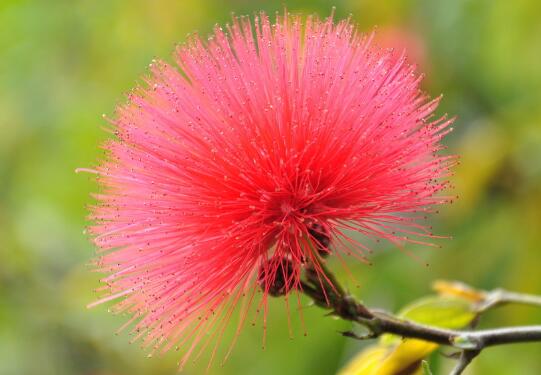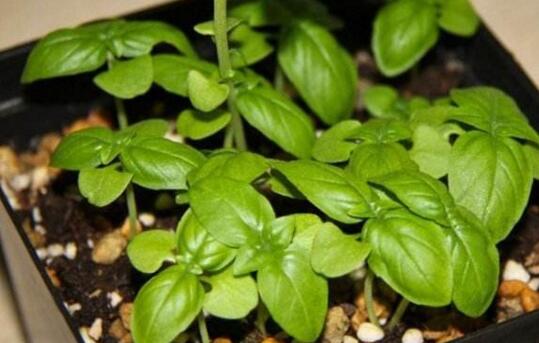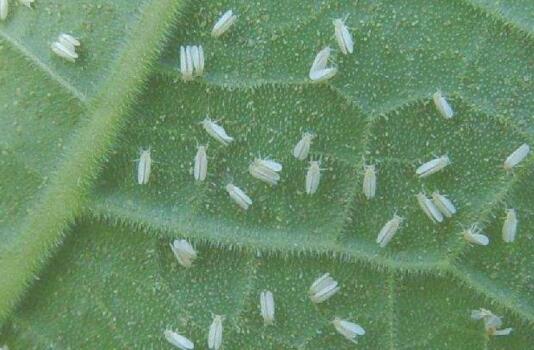What about the growing insects of albizzia, pest control of albizzia flower / 3 insect pests 1 disease
The albizzia flower is a kind of flower planted all over the world, which is highly ornamental, but if it is not careful in the breeding process, there will still be bad phenomena such as diseases and insect pests, which will affect the ornamental nature of the albizzia flower in its eyes. in serious cases, it will still lead to the phenomenon of wilting, so what about the long insects? What do you need to do to control the diseases and insect pests of albizzia acacia? Next, the editor will take you to learn about it.
1. What to do with the growing insects of Albizzia Albizzia

II. Disease and pest control of albizzia julibrissin
Insect pest
1. Blown cotton scale
Blow cotton scale is a kind of pest of Homoptera, this pest mainly harms the buds of albizzia, at the beginning, it will cause the leaves to yellowing, and if it does not come out for a long time, it will also cause plant death.
Control method: in addition to this pest, we can use 1000 times of fenitrothion for spraying, usually once every two weeks, and then completely eliminated after 2-3 times.
two。 Longicorn beetle
Among the diseases and insect pests of the albizzia flower, longicorn beetle is a common pest. It mainly eats the leaves of the albizzia flower, and will gradually erode its leaves, causing the leaves to be dilapidated and very beautiful. In serious cases, it will lead to the phenomenon of wilting of the albizzia flower.
Control method: in the control of longicorn beetle pests, we can choose to use 20% chrysanthemum EC and 25% chrysanthemum mixture 2000 times to directly spray.
3. Leafhopper
Leafhopper is a pest of cephalophora. This pest mainly feeds on the juice of albizzia, and there will be a lot of white spots on the leaves at the initial stage. If it does not come out for a long time, the leaves will gradually fall off and the plant will gradually die.
Control method: in addition to this pest, we can use light to trap or spray 2.5% deltamethrin wettable powder 2000 times.
Disease
1. Fusarium wilt
Among the diseases and insect pests of albizzia, Fusarium wilt is a kind of disease with high incidence. This disease does great harm to the leaves, flowers and fruits of albizzia. If the disease must be done in time, it will be difficult to prevent and cure if the incident is prolonged.
Control methods: in the prevention and control of Fusarium wilt, we can choose 41% poly-pyrimidine according to 600-800 times dilution to control the diseased plants.
What about the marigold worms? disease and pest control of marigolds / 3 insect pests and 3 diseases
Calendula, also known as marigold, which belongs to Compositae, is a kind of ornamental flower, which is welcomed and loved by many people. However, although the marigold is beautiful, once it is not properly maintained, it will seriously affect the ornamental property, so what about the marigold worm? The following are six kinds of marigold pest control, follow the editor to learn about it.
1. Marigold worms, sprayed with medicine
If you keep marigolds indoors, it's easy to say that if you don't strictly follow the method of marigold cultivation, there will be symptoms of worms getting sick, which will seriously affect flowering. At that time, flower friends must be very worried! What about the marigold worm? First determine the specific insect pests, and then solve the problem, in this regard, the editor summarized six kinds of marigold diseases and insect pests, we continue to look at.
II. Disease and insect pest control of calendula
1. Aphids
As one of the main pests of flowers, aphids also damage calendula. It is understood that aphids mainly appear in a large area in spring and feed on the branches and leaves of calendula; they also appear in autumn, endangering the bud core and petals of calendula. Symptoms: the leaves of marigolds are yellow and deformed, the buds are rotten, and the florescence is shortened.
Control method: after finding aphids, the family can scrub with clean water or soapy water, the effect is good. When the damage is serious, spray 1000-2000 times omethoate solution, or kill with tobacco water: 50 grams of tobacco leaves add 5 kilograms of water, boil it.
2. Red spider
Red spider mostly occurs in summer high temperature season, is one of the main pests of marigold, it mainly appears on the back of leaves, stinging and sucking branches and leaves. Symptoms: the leaves of Calendula are dry and yellow, which will harm the petals during flowering and cause the flowers to wither.
Control method: when red spiders are found, the whole plant of marigold should be thoroughly washed with large water, and then sprayed with 1000 times of dichlorvos or 1000 times of triclofenac.
3. Spodoptera litura
One of the diseases and insect pests of calendula, which rarely appears in family maintenance, mainly with larvae gnawing on mesophyll, dispersing harm and nibbling away leaves. Symptoms: incomplete leaves and holes, marigolds beyond recognition.
Control method: the density of Spodoptera litura is small, and the drug resistance is weak, when it is less, it can be removed manually. When there are many bugs, spray Guoguang 1500 times + Luke 2000 times mixture, can be used 1-2 times, the interval of 7-10 days, the effect is good.
4. Powdery mildew
Powdery mildew is one of the main diseases of marigold. The leaves look disgusting after the disease, which seriously affects its ornamental ability. Symptoms: there are white round spots on both sides of the leaves, the leaves look like they are covered with white powder, and the stems are also covered with white powder. In severe cases, the whole plant withered and died.
Prevention and treatment: when the flowers fall behind, the fallen leaves and residual flowers will be removed in time to reduce the source of the disease. When the disease is serious, 1500 times methyl topiramate or rutin wettable powder can be sprayed once every 10-15 days for 2-3 consecutive times.
5. Mosaic disease
One of the diseases and insect pests of calendula, which mainly harms leaves. Symptoms of the disease: marigold leaves will form mottled or mosaic-like leaves, yellow leaves, plant growth hindered and dwarfed, flowers abnormal growth.
Prevention and treatment: when the above diseases are found, 0.5% antiviral agent No. 1 water agent 300 times or 5% bacteriological clear water agent 400-500 times can be sprayed for prevention and treatment, once every 7-10 days, 2-3 times successively.
6. Rust
In summer, marigolds are prone to rust under high temperature and high humidity. Disease symptoms: diseased leaves will appear rust-like spots, resulting in fallen leaves, poor growth and so on. In severe cases, marigolds die quickly due to the evaporation of a large amount of water in the body.
Prevention and treatment: once the above symptoms are found, the leaves should be removed in time to reduce the source of the disease. In addition, 50% verapamil wettable powder 2000 times should also be sprayed in time for prevention and control.
With regard to the prevention and control of diseases and insect pests of calendula, the editor has introduced this. I believe that if you encounter marigold worms or get sick again, you should know how to do it! Generally speaking, calendula is rarely disturbed by diseases and insect pests, so as long as you take good care of it, these troubles will not be found. Finally, may your calendula blossom beautifully.
What about the growing insects of white orchids? control of diseases and insect pests of white orchids / 3 insect pests and 2 diseases
In the process of cultivating white orchids, the last thing we want to encounter is the problem of diseases and insect pests, because these problems do great harm to the plant, not only affect the ornamental, but also cause the whole plant to die, so what about the white orchid worm? What do you need to do to control diseases and insect pests of white orchids? Next, the editor will take you to learn about it.
First, what about the white orchid worm?
If you want to know what to do with white orchid worms, we must first understand what kind of insects grow, so that we can deal with them pertinently, because the prevention and control methods of each kind of diseases and insect pests are different. In the following, there are all kinds of pest control methods of white orchids. Friends with or without similar troubles can learn about it, after all, it is a precaution in the future.
II. Disease and pest control of white orchids
Insect pest
1. Red wax scale
The red wax scale is a relatively high incidence of diseases and insect pests in white orchids. It mainly absorbs the juice of the plant, and its excreta will also lead to coal fouling disease, resulting in a layer of black mold on the leaves, leading to the gradual weakening of white orchids. In serious cases, it may even cause it to fail to bloom.
Control method: in the control of this pest, we can use 1000 times of imidophos EC to spray the white orchid, we can spray once every 4-6 days, after three consecutive sprays, we can basically eliminate this pest.
two。 Red spider
Among the diseases and insect pests of white orchids, red spiders also have a relatively high incidence, and its high incidence period is around May every year, so we must pay special attention to it at this time. If this pest occurs in your white orchid, its leaves will gradually turn yellow and white, and finally wither gradually.
Control method: when controlling the pest of red spider, we can spray it with 2000 times EC, and after spraying, we have to disinfect the white orchid to avoid residual germs.
3. Blown cotton scale
Blow cotton scale is a kind of pest of Homoptera, this kind of pest is harmful to many plants, white orchid is also one of them, blow cotton scale mainly harms the leaf buds and branches of white orchid, it will gradually cause leaves yellowing, branches fall off, the whole white orchid will die in the eyes, which shows the great harm of cotton scale among the diseases and insect pests of white orchid.
Control method: in the prevention and control of this pest, if it is not serious, we can cut off the branches and leaves with eggs, of course, we can also use the most direct method, directly use 40% omethoate 1000 times liquid to spray it.
Disease
1. Anthrax
Among the diseases and insect pests of white orchids, anthracnose is a more common one. When the disease occurs, there will be many round brown spots on the leaves of white orchids, the size of which is 2-8mm, which will gradually spread over time, and finally lead to plant rot.
Prevention and treatment: in the prevention and control of this disease, we can use 70% anthrax Fumei 600 times solution to spray the diseased plants, usually once every 10-15 days, and then recover after 2-3 times.
two。 Chlorosis
Chlorosis is not as frequent as the above diseases and insect pests in white orchids, but it also has a certain probability. When this disease occurs, the leaves of white orchids will gradually lose green, and the leaf color will gradually change from green to yellow, and finally from yellow to white. In severe cases, the whole leaves will dry up and fall off.
Prevention and control methods: in the prevention and treatment of chlorosis, we can use the yellow leaf fast green plant antiviral compound nutrient solution of 500 times to spray the plant, once every 7-10 days, 2-3 times in a row can be cured.
Conclusion: after reading the above, I believe we all know how to solve the problem of white orchid worms. In fact, this kind of problem is mainly caused by improper maintenance. We still need to take a look at the cultivation methods of white orchids when we have time. There is a detailed conservation teaching. This is the end of the editor's introduction to the problem of pest control of white orchids. I hope I can help you all.
- Prev

Basil pest control methods, 4 pests 1 disease control/prevention is the key
Basil leaves are wide and wrinkled. Although the edible and medicinal value is very high, they will also become the target of pests and diseases. Therefore, we need to understand the basil pest control methods when planting, so that we can take correct control measures in time when basil has long insects or disease spots.
- Next

What about the one-leaf orchid worm, the disease and pest control of one-leaf orchid / five tricks to avoid the early fall of leaf yellow
Although the one-leaf orchid has a strong resistance to diseases and insect pests and its own adaptability is also very strong, if you do not understand the correct culture method of one-leaf orchid, it may still be disturbed by many diseases and insect pests. Let's take a look at the prevention and control methods of diseases and insect pests of Cymbidium.
Related
- Fuxing push coffee new agricultural production and marketing class: lack of small-scale processing plants
- Jujube rice field leisure farm deep ploughing Yilan for five years to create a space for organic food and play
- Nongyu Farm-A trial of organic papaya for brave women with advanced technology
- Four points for attention in the prevention and control of diseases and insect pests of edible fungi
- How to add nutrient solution to Edible Fungi
- Is there any good way to control edible fungus mites?
- Open Inoculation Technology of Edible Fungi
- Is there any clever way to use fertilizer for edible fungus in winter?
- What agents are used to kill the pathogens of edible fungi in the mushroom shed?
- Rapid drying of Edible Fungi

